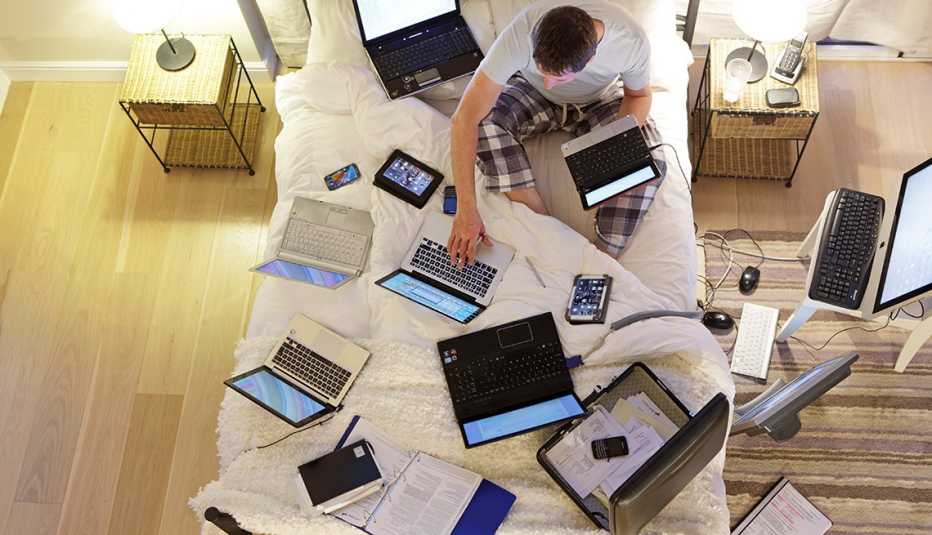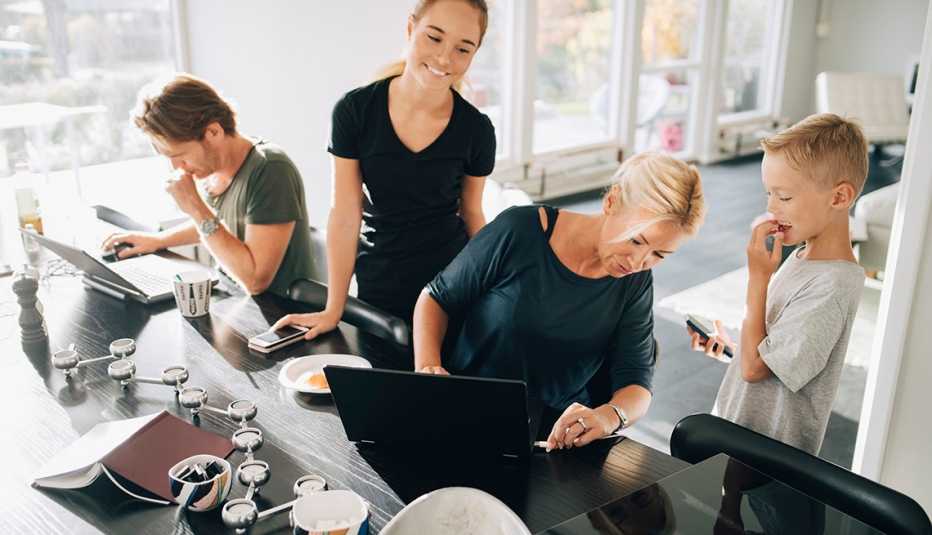Staying Fit
You thought you were spending way too much time on your smartphone, tablet, computer and television before the coronavirus pandemic. Now that you're forced to stay home, you're probably spending even more time sitting down with these screens.
Think about it. You're glued to your electronics to connect remotely with clients, colleagues and customers. Or you're consuming mindless entertainment just to avoid going stir crazy.


AARP Membership— $12 for your first year when you sign up for Automatic Renewal
Get instant access to members-only products and hundreds of discounts, a free second membership, and a subscription to AARP the Magazine.
And while you also may be on FaceTime, Zoom or other video platforms because that's the only way to “see” family and friends, the real danger to avoid is turning screen time into an addiction.
Look at more than screens daily
5 positive uses of screen time
All the time we spend on screens may come at the expense of other behaviors that are healthier or more beneficial, says BJ Fogg, a Stanford University behavioral scientist and author of Tiny Habits: The Small Changes That Change Everything. Fogg wants to direct people on screens toward more positive pursuits: creativity, learning, nature and relationships.
Here are five of Fogg's best uses of screen time for older adults.
• Talk live to the people you care most about on FaceTime, Skype, Zoom or other video conferencing platforms. Or text them to share your appreciation and gratitude.
• Watch a TED Talk every day. The nonprofit organization claims more than 3,300 talks to “stir your curiosity."
• Watch a nature video. You may not be able to escape to the great outdoors, but you might meditate to that video of a babbling brook.
• Record a video of stories from your life to share with your kids and grandkids.
• Visit the places online that help you nurture your most passionate creative pastimes.
During normal times, frequent digital use and time spent in front of a screen often leads to problems. Face-to-face human contact is reduced, and screen time may displace healthier behaviors like exercising, says BJ Fogg, a behavioral scientist at Stanford University in Northern California.
While you may need a crowbar to get devices out of the hands of tweens and teens — ask any parent — a surprising number of older adults cannot seem to tear themselves away from the displays either. Americans age 65 and older spend nearly 10 hours a day consuming media on their computers, smartphones and televisions.
About 7 1/2 of those hours is spent in front of the TV. But older adults’ total screen time is 12 percent more than people ages 35 to 49 and a third more than those ages 18 to 34, according to Nielsen market research released in August 2019.
"The circumstances of the moment could take someone 50 and older and push them into the behavioral trends that have been plaguing those who are much younger,” says Cal Newport, a computer science associate professor at Georgetown University in Washington, D.C., and author of Digital Minimalism: Choosing a Focused Life in a Noisy World.
Too much screen time also can result in physical problems: eye strain, insomnia and pain in the neck and shoulders. The fear about digital addiction is real, but the need to increase screen time is a present necessity.
"Unfortunately, screens are the best way to navigate and medicate what's going on, regardless of age,” says Gene Munster, a managing partner at Loup Ventures venture capital firm based in Minneapolis and New York. “Where it's most dangerous is an endless scroll through content on Netflix, Instagram” or elsewhere.



































































